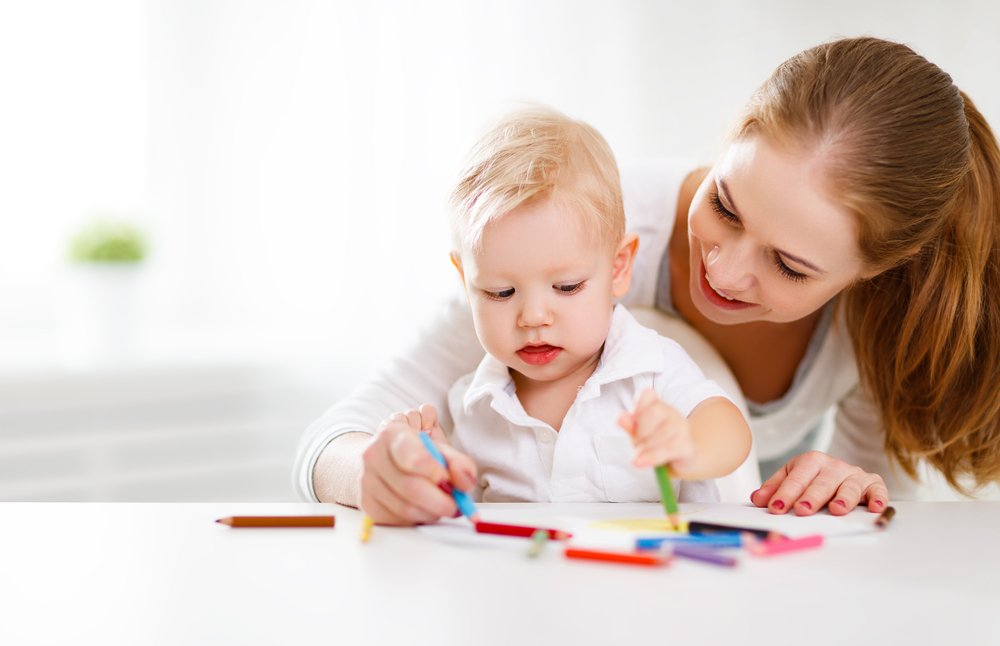Key points:
- From birth, your child begins developing hand and finger strength, preparing for tasks like drawing and writing.
- Motor skills progress from whole-arm movements to fine, precise ones necessary for writing.
- Encourage comfortable pencil grips, with the ‘Tripod Grip’ being the ideal way to hold a pencil.
- Sensory exploration, like feeling crayons or clay, positively influences later handwriting abilities.
Since birth, your little one has been working on their motor skills. At first they could barely open their hands, but soon enough they liked holding on to your finger and, later, grabbing objects and giving them a shake. Every day your little one is achieving more and more complex tasks with their hands. They can now pull objects towards themselves, hold them with the palm of their hand, and maybe use both hands simultaneously. Soon they’ll learn how to build tall towers, pick up small objects, manipulate playdough, and hold a crayon. Before you know it, they’ll be tracing lines, making beautiful drawings, and writing their name. All these incredible skills are fostering strength in their hand and finger muscles, getting them ready to hold a pencil in writing position using the index, middle finger, and thumb.
At first, your little one will begin holding a crayon or marker using their whole fist making random whole-arm movements. They’ll then try holding it with their fingers and hand facing down to the paper. They will still make shoulder and elbow movements to draw lines in all directions, but with a little more control over them. Eventually, their muscles will be strong enough for them to change the position of the crayon, steady the shoulder and wrist, and do short and precise movements while the end of the crayon points straight past the shoulder of the drawing arm. When your child reaches this point, they’ll become quite the painters, and handwriting skills will need to be in their repertoire; specially during the school years. Of course, this will not happen overnight. Every day your child will build up and prepare their muscles with simple motor activities to eventually reach the writing milestone.
As your little one manipulates crayons, they’ll search for a grip that’s most comfortable for them. You might need to look out for any awkwardness in their grip that will later hinder their inscriptive movements. How do you know if your little one is developing a good writing grip? Most teachers and therapists consider the ‘Tripod Grip´ as the ideal way of holding a pencil. It’s the most common grip in which the child holds the pencil with their thumb and index finger, while the pencil rests on the middle finger.
Studies that observed the progression in the development of the pencil grip suggest the tripod grasps to be the most common as the grip matures. As your child continues strengthening their muscles, they will adapt their pencil grip and around 2.5-3 years of age, they’ll be able to do more controlled, fine, and dexterous movements.
Another study that observed good and poor handwriting skills suggests that proprioceptive-kinesthetic awareness is an important factor for later handwriting abilities. In the early stages of learning motor skills tactile, proprioceptive exploration, and manipulation are very important and depend largely on the visual control your little one has on the object.
So, even if your little one is far from writing down their name, fostering the manipulation of different objects and exploring with their hands and fingers has a positive effect on later handwriting abilities. The way the crayon feels, the smell of the paint, the texture of the clay, are all sensory elements of information that send feedback to the brain and foster your little one’s process for developing future motor skills.
If you want to know more about your little one’s fine motor development, check out these articles:
- The first years: fine motor skills
- Finger dexterity: developing the pincer grasp
- Why hand and finger control are so important
- Fine motor skills: The art of scribbling and writing
For more information on this subject visit:
- Developmental Progression of Grip Position for Pencil and Crayon Control
- Comparison of pencil-grip patterns in first graders with good and poor writing skills








